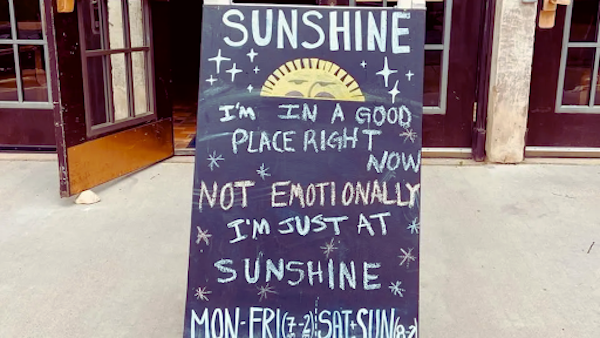“Oh, my furniture is floating” — A Look into Promoting Flooding and Heat Stress Resilience in Self-build Housing
“When it's raining, I can't move into my street, oh I can't come in. Oh, my furniture is floating…your car is floating, you can't get into your house.” This was said by one of the focus group participants in my research study, as she described the severity of flooding conditions in Lekki, Lagos (Nigeria). Her concerns not only provide a view of flooding severity in parts of Lagos, but also echoes similar conditions in many other tropical regions of the Global South that are frequently affected by flooding and heat stress – the counterpart.
In many cities in countries such as Nigeria, Ghana, and Bangladesh, with tropical monsoon, rainforest, and savannah climates, frequent and intense rainfall coupled with factors including substandard drainage and impervious surfaces lead to flooding and inundation of property. Many of these cities are also dense, with little to no vegetation, and constructed with hard and impervious surfaces — making it commonplace for temperatures to go as high as 118 degrees Fahrenheit. When coupled with other factors such as the choice of building materials, unreliable electricity supply, or at times disconnection from the grid, urban dwellers are left vulnerable to high temperatures, particularly indoor heat stress. The Intergovernmental Panel on Climate Change (IPCC) estimates that the global mean temperature will rise by 2.5°F to 10.4°F (1.4 to 5.8°C) between 1990 and 2100. Most concerning, it is predicted that temperatures of sub-Saharan Africa will be “higher than the global mean temperature increase” with expected “longer and more frequent heat waves” (Shepard, 2019).
Flooding and Heat Stress
Coastal Nigeria is one of the most vulnerable regions to flooding and heat stress (F&HS). For one, the dense cities of Lagos in the southwest and Port-Harcourt in the south-south are low-lying. Per Rashid, et al. (2013), a series of research studies predict that sea-level rise “will create additional flooding risks for the 600 million people living in low-elevation coastal zones.” Further risk factors in coastal Nigeria such as substandard drainage systems, low maintenance of existing drainage systems, unplanned land use, and the topography of dwelling sites expose households in these cities to localized flooding and storm surges.
Nigeria has also seen a significant and steady rise in temperatures since the 1980s, however, the power supply remains unreliable. This exacerbates the effects of high temperatures on households, especially during daytime in the dry season. When you add sensitivity factors such as low-income levels because of high poverty rates, the ability of urban dwellers in these cities to respond effectively to both flooding and heat stress diminishes.
Consequently, every year, thousands of people in coastal Nigeria are displaced from flooding, thousands of lives are lost, and there is an increased occurrence of water and vector-borne diseases such as cholera and malaria, which can be especially fatal for young children and the elderly. Furthermore, prolonged exposure to high temperatures can worsen chronic conditions such as cardiovascular disease, respiratory disease, and diabetes-related conditions.
In addition to these health issues, there are millions of dollars lost in property damages, including expenses related to redevelopment of damaged homes and replacement of tangible property from major flooding and waterlogging. Unfortunately, the burden of these losses is especially high for households that build their own homes themselves through the self-build housing delivery process.
Self-build Housing
Growing up in a self-built house in a diverse neighborhood with homes of both formal and informal settlement typologies, the impacts of these losses were all around me. However, I also noticed ingenious responses to the flooding as it happened, actions that improved thermal comfort, and actions that capitalized well-being despite the daily challenges from intense rainfall and hot days.
My curiosity was ignited by this ingenuity and spurred my academic research into what were the design solutions utilized by households in the tropical Global South that helped them cope and adapt to both flooding and heat stress. Were they the same as strategies I had seen? How did they differ and how successful were they? My quest for these answers led to the development of the Re-HOUSED toolkit with three tools: 1) a matrix of 149 F&HS resilience design solutions, 2) a web application to diagnose vulnerabilities and contexts of decision-makers through an algorithm I developed that predicts viable design solutions among available options, and 3) a simplified guidebook to inform non-expert and technically low-skilled self-builders on how to design-build or make improvements to their housing to increase resilience against F&HS.
What Drives This Ingenuity?
I found from my research that this handmade urbanism of coping and adapting strategies is fueled by factors such as risk perception, local and indigenous knowledge, prior experience with loss and vulnerability, ‘fight or flight’, locus of control, available resources such as building materials, household makeup, and culture.
Bottom-up resilience is primarily cultivated from the need of households to protect their dwelling. There is a higher sense of responsibility and stake in coping and adapting to climate vulnerabilities when assets are owned or built by the individuals responsible for those assets. The literature shows that self-build housing occupants in countries of the tropical Global South such as Nigeria, Ghana, Uganda, and Bangladesh, are relatively more knowledgeable about their perceived risks of climate vulnerabilities and how to address those vulnerabilities to cope and adapt. Urban dwellers in both formal and informal settlements have greater flexibility to develop, explore, and utilize bottom-up solutions when they build their housing themselves or utilize self-build practices.
If occupants of both informal and formal self-build urban settlements are coping with climate vulnerabilities with a degree of success, then there are opportunities to learn about resilience in those communities and the factors that contribute to long-term success.
The Research Framework
So, how can one learn about bottom-up resilience from frontline communities and collaboratively develop viable solutions? Through my work, I have gleaned five main steps for effectively approaching bottom-up resilience.
- Learning about existing solutions through ethnographic research methods or review information gained through ethnographic research.
- Engage with community members and key stakeholders to identify barriers to adopting proven solutions at the local level.
- Design/develop solutions with key stakeholders through Human Centered Design techniques.
- Validate the application of these solutions with real-life applications/engagement with key stakeholders.
- Engage with key stakeholders to identify the best communication strategies for disseminating information on the solutions.
From my experience in climate research, resilience, and adaptation, a people-centered approach is most important. This focus on lived experiences and working with stakeholders rather than for stakeholders is very present in the research I lead at the Texas Energy Poverty Research Institute, where we work towards advancing solutions for affordable, reliable, and clean energy for marginalized and disadvantaged communities.
Our Work Is Far from Over
Re-HOUSED will be an ongoing initiative that, with time, I hope will include different climatic and cultural contexts such as the Colonias in the United States. I plan to continuously push the boundaries on how we can learn from frontline communities — engaging with them to better understand their lived experiences and to develop more affordable solutions and systems that not only improve resilience but also support adaptive capacity.
About the Author:
Bobuchi Ken-Opurum, PhD
Founder, Re-HOUSED Decision Support Toolkit
Director of Research, Texas Energy Poverty Research Institute
PHOTO: Rachel Claire | Pexels
Read perspectives from the ISSP blog



